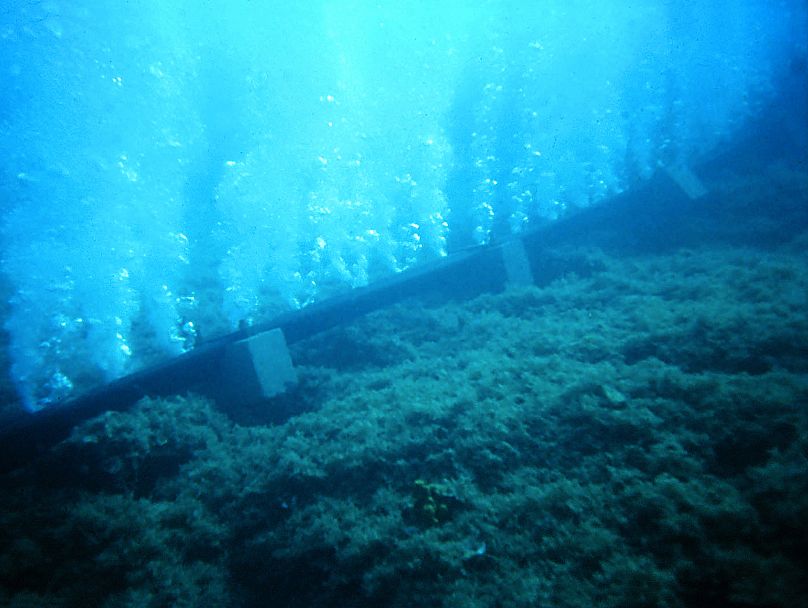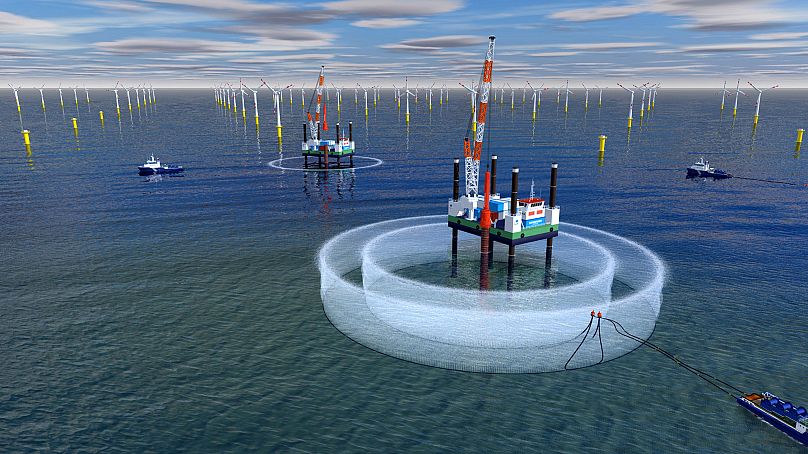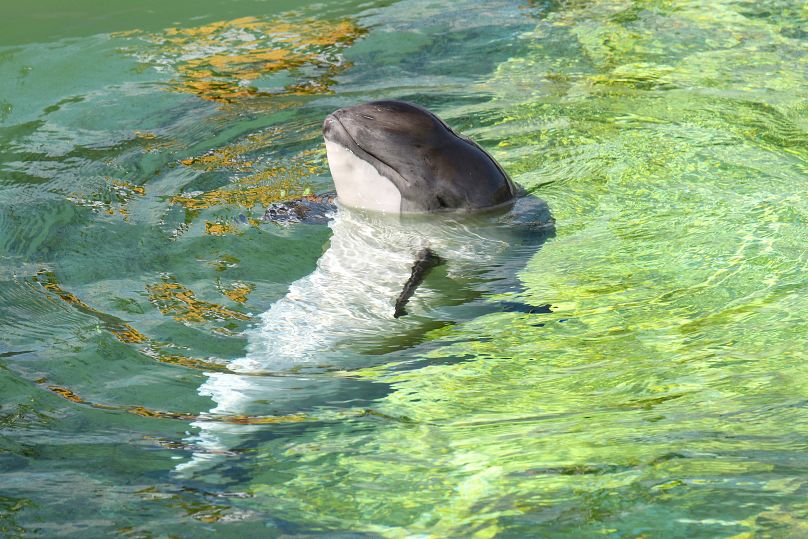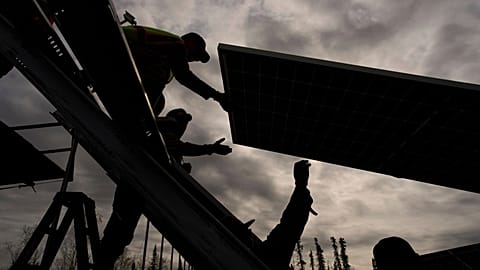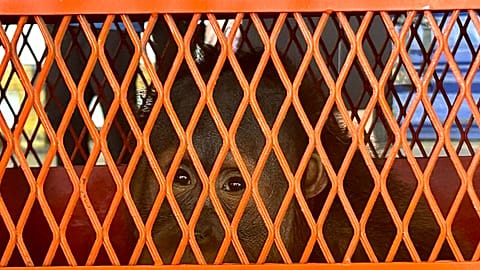Bubble curtains were used to limit oil spills - now they’re safeguarding porpoises from wind farm noise in the North Sea.
Giant rings of bubbles are being used to protect marine animals from the sound of wind turbine construction.
As European countries aim to make the North Sea into the world’s “largest green energy power plant”, more and more offshore wind farms are being erected.
There are few humans around to complain about the noise, but marine wildlife lives in a world of sound - and all the commotion can take a deadly toll.
To shield porpoises, seals and other animals from the deafening blows of pile-driving - where the steel foundation that supports a turbine is hammered into the seabed - bubble curtains are going up.
Where are wind farm bubble curtains used?
“The big bubble curtain technology is gaining widespread adoption in northern European nations and worldwide,” says Jörn-Philip Pfeiffer, head of business development at Hydrotechnik Lübeck. The German engineering company pioneered the big bubble curtain with funding from Germany's environment ministry.
The tech has been used to help contain oil spills for decades, but bubbles are now firmly enlisted on the side of green energy.
“Almost all major wind farm operators utilise this technology,” says Pfeiffer, particularly in Europe, “where there is a race to construct additional offshore wind farms as part of their collective endeavours to reduce CO2 emissions and combat global warming.”
“The newly launched offshore market in the USA is also embracing the big bubble curtain, much like Taiwan,” he adds.
How do bubble curtains work?
The big bubble curtain came from the technology of compressed air barriers, where rising air holds back oil or debris, which was re-developed for offshore wind farm construction sites.
It looks like a jacuzzi for orcas, as bubbles rise to the surface, encircling the wind turbine area. They come from a large, perforated hose laid on the seabed which air is pumped down to create the bubbly veil.
Sound travels faster through water than air, and the bubble curtain helps to slow it down by breaking up the sound waves - which are made to bounce against the bubbles, sapping their energy.
The big bubble curtain was designed in Germany with endangered harbour porpoises in mind, which are the only cetacean species living in its North Sea and Baltic Sea. It muffles the noise to a threshold deemed safe for the aquatic mammals, according to scientific researchers.
Why is wind farm construction so noisy?
North Sea countries including the Netherlands, Germany, Denmark and Belgium have pledged to jointly increase offshore wind capacity in the region to 300GW by 2050.
But they’re not building on a blank canvas. German parts of the North Sea and the Baltic Sea alone are estimated to contain some 1.6 million metric tonnes of rusting munitions dumped after World War Two.
Toxic bombs and mines have to be safely cleared with controlled explosions before construction begins. That’s before the pile-driving process involving several thousand hydraulic hammer blows starts.
Wind farms are rising at a remarkable speed - up to 4,000 in the North Sea today, from just 80 in 2002. And they need to grow further still if the world is to meet its renewable energy targets.
To stay below the crucial 1.5C global warming limit, wind and solar will need to make up 40 per cent of global electricity by 2030, the International Energy Agency says. In 2022, these renewable sources reached 12 per cent of global electricity generation, clean energy think tank Ember notes.
Turbines themselves are also getting bigger as production ramps up, with heights of more than 270 metres and each blade spanning over 100 metres, around the length of a football pitch.
The UK’s Dogger Bank wind farm - set to be the world’s largest - required an installation vessel taller than the Eiffel Tower. Shipping all these giant parts around generates a lot of noise too.
What harm do wind turbines do to porpoises?
The ruckus of pile-driving noise has been found to cause temporary hearing loss and in some cases permanent deafness in harbour porpoises.
Since these marine mammals use echolocation to communicate and navigate - emitting ultrasonic clicks that bounce off fish or objects - this hearing loss is highly disorientating and can effectively be a death sentence.
Fleeing the sound also leads to dangerous displacement. A 2013 study of pile-driving during the first offshore wind farm construction in the German North Sea found that the noise led harbour porpoises to swim more than 20km away, leaving more abundant food sources behind.
Having collected noise level data on every pile-driving event since 2011, Germany has built up a detailed picture of wind turbine construction and its potential environmental impact.
The sound has stayed below the country’s official noise threshold since 2014. Carina Juretzek, from Germany's Federal Maritime and Hydrographic Agency, told BBC Future Planet that data shows a 99 per cent drop in noise pollution. She says this is thanks to the use of the bubble curtain and other measures, such as placing a steel sleeve around the pile.
Denmark and the Netherlands have also introduced porpoise-protecting rules for wind farm developers.
















